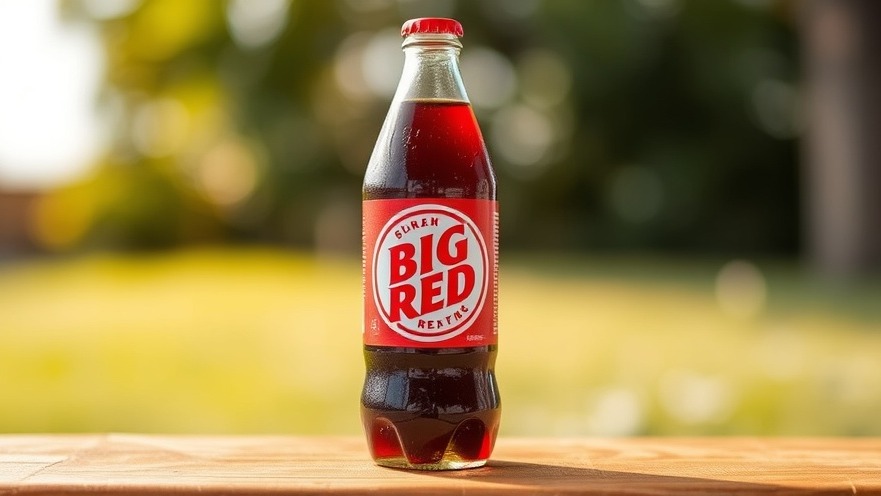
The Uncertain Future of Big Red: Will Red Dye No. 40 Disappear?
In the heart of San Antonio, the beloved soft drink Big Red faces a controversial challenge as plans are set in motion to eliminate artificial dyes from food and beverages by the end of 2026. The key ingredient contributing to the drink’s signature bright hue, red dye No. 40, is now under scrutiny following an announcement by the U.S. Department of Health and Human Services and the FDA. This plan aims to phase out eight petroleum-based synthetic dyes, igniting conversations about the future of this Texan favorite.
Big Red: A Cultural Icon
Big Red isn't just a beverage; it’s intertwined with the culture of San Antonio. Often paired with traditional breakfast items like barbacoa, its taste and visual appeal are integral to the dining experience in the region. Tommy’s Restaurant owner Brandon Ramos articulated the sentiments of many locals, expressing concerns that changes to the drink may alter its familiar flavor and visual allure, thereby impacting sales. Many San Antonians view Big Red as a staple, claiming that removing its signature dye could spark a cultural backlash.
Industry Reactions: A Divided Landscape
The food and beverage industry is at a crossroads in light of this federal directive. Major companies like General Mills and Kraft Heinz have begun aligning their products with the new regulations, while other giants, including Mars—makers of M&Ms and Skittles—resist the change, proclaiming their product safety. This pushback illustrates the complexities and divisions within the industry regarding artificial ingredients in consumables. The American Beverage Association has voiced their stance, warning that banning safe and globally approved ingredients would lead to further challenges in product formulation.
The Impact on Consumers
Consumers are left wondering how proposed changes will affect their favorite products. While health considerations are paramount, many question the necessity of altering time-honored recipes. Local debates highlight sentiments shared on social media, where passionate expressions about Big Red's future abound, with some calling for a potential revolt against changes to their beloved drink. Would changing the dye compromise the essence of Big Red or lead to innovation in flavors without compromising quality?
Phasing Out Dyes: What It Means for the Future
The elimination of artificial dyes raises significant questions about the balance between safety and consumer preferences. Will producers find ageless alternatives that preserve the integrity of iconic beverages? As Keurig Dr Pepper, the company behind Big Red, has yet to reveal its plans for reformulation, many in the industry and consumer base await clarity. The transition may redefine traditional tastes, but it also challenges producers to inspire creativity in the beverage landscape.
Health Considerations and Community Sentiments
While there are health concerns tied to synthetic dyes, advocates for consumer choice emphasize the importance of personal accountability. Consumers who prefer organic or dye-free products push industry giants to adapt amidst growing health consciousness. In the case of San Antonio, Big Red symbolizes more than just a drink; it embodies community nostalgia and pride in local heritage.
Looking Forward: Balancing Tradition and Change
As change looms at the horizon, the future of Big Red may hinge on community response and company adaptability. With a significant timeline leading up to the 2026 deadline, producers have an opportunity to engage with Texan consumers, experiment with new formulations, and potentially expand the brand narrative. The dialogue surrounding artificial dyes also encourages conversations about escalating broader trends in the food industry—a cultural touchstone as this conversation unfolds.
Ultimately, whether Big Red can preserve its identity while complying with new guidelines remains to be seen. But for now, the people of San Antonio stand united in their affection for this staple. As they brace for potential changes, they continue savoring the flavours that define their culinary culture.
 Add Element
Add Element  Add Row
Add Row 



Write A Comment